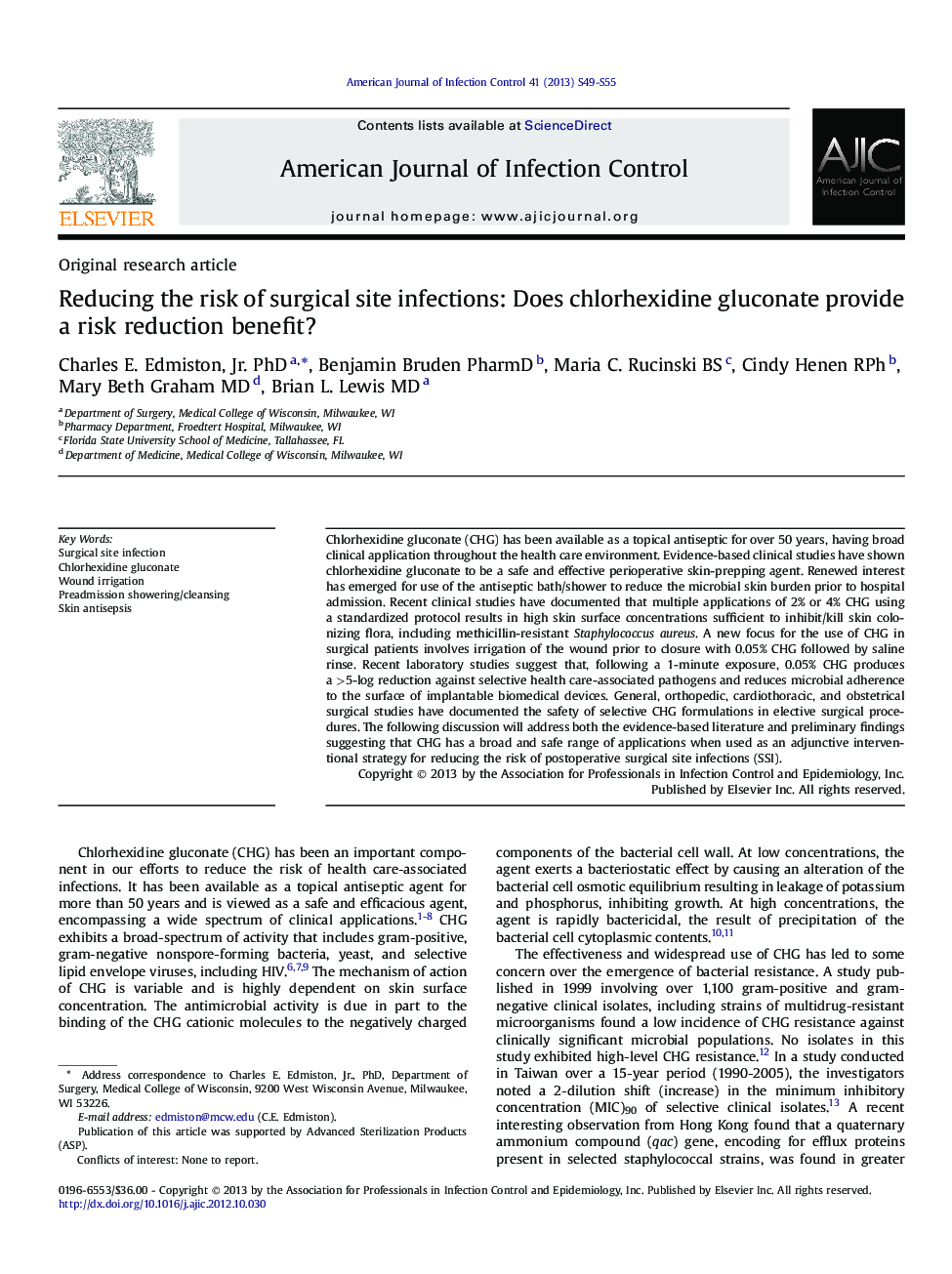| کد مقاله | کد نشریه | سال انتشار | مقاله انگلیسی | نسخه تمام متن |
|---|---|---|---|---|
| 2638409 | 1563501 | 2013 | 7 صفحه PDF | دانلود رایگان |

Chlorhexidine gluconate (CHG) has been available as a topical antiseptic for over 50 years, having broad clinical application throughout the health care environment. Evidence-based clinical studies have shown chlorhexidine gluconate to be a safe and effective perioperative skin-prepping agent. Renewed interest has emerged for use of the antiseptic bath/shower to reduce the microbial skin burden prior to hospital admission. Recent clinical studies have documented that multiple applications of 2% or 4% CHG using a standardized protocol results in high skin surface concentrations sufficient to inhibit/kill skin colonizing flora, including methicillin-resistant Staphylococcus aureus. A new focus for the use of CHG in surgical patients involves irrigation of the wound prior to closure with 0.05% CHG followed by saline rinse. Recent laboratory studies suggest that, following a 1-minute exposure, 0.05% CHG produces a >5-log reduction against selective health care-associated pathogens and reduces microbial adherence to the surface of implantable biomedical devices. General, orthopedic, cardiothoracic, and obstetrical surgical studies have documented the safety of selective CHG formulations in elective surgical procedures. The following discussion will address both the evidence-based literature and preliminary findings suggesting that CHG has a broad and safe range of applications when used as an adjunctive interventional strategy for reducing the risk of postoperative surgical site infections (SSI).
Journal: American Journal of Infection Control - Volume 41, Issue 5, Supplement, May 2013, Pages S49–S55